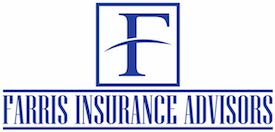Great article by Jacquelyn Connelly as it relates to Auto Insurance Rates.
After a Tough Couple of Years, Personal Auto Rates Find Stability
Between 2012, when people started getting behind the wheel again post-recession, and 2016, personal auto claim frequency and severity increased in the neighborhood of 5-20%, according to the 2018 Insurance Fact Book from the Insurance Information Institute.
In the years following the 2008 financial crisis, “auto claims frequency steadily increased as the economy recovered and miles driven per year increased,” explains Ana Robic, COO, Chubb Personal Risk Services. “What’s more, vehicle construction complexity and items such as parking sensors, cameras and expensive headlights put upward pressure on claims severity.”
“When you saw rates going up in 2014-2016, you were seeing an increase in frequency based on average miles driven going way up,” agrees Luke Bills, senior vice president, U.S. Personal Lines Product, Safeco. “You also saw severity increase because new cars have fancier equipment, which makes them more expensive to repair.”
Fast-forward to 2019: People just aren’t driving as much as they were.
“Frequency is coming down because average miles driven has decreased over the last 18 months,” Bills says. “That average peaked sometime in the past two years, and now it’s moderating back to what’s more consistent with long-term trends.”
Although Todd Davis, vice president of personal lines field product at Nationwide, notes that auto claim severity has continued to increase in the lower to mid-single digits based on high medical and vehicle repair costs, he adds that growth in new vehicle sales seems to have leveled off and is expected to decline by the end of the year—helping to keep claims frequency around flat to slightly negative. “A lot of what was driving those exposure units is easing,” he explains. “We’re seeing favorable frequency trends based on that.”
The personal auto insurance industry has responded with solid rate moderation over the last six to 12 months. Since summer of last year, “we’ve seen prices come down,” says Bills, who points out that the motor vehicle insurance index—a component of the private transportation index included in the transportation group of the Consumer Price Index—was .7% in June 2019, compared to 7.6% in June 2018 and almost 10% in June 2017: “The falloff has been pretty significant.”
While Bills attributes some of that to State Farm, which holds about 20% of the auto market and has been taking rate to the tune of -4%, “most carriers today are somewhere in the 0-2% range.”
“We’re seeing the magnitude of rate increases starting to even out,” Davis agrees. “That’s influenced by competitive pressures and the fact that many carriers are experiencing favorable underwriting results—a welcome change from a few years ago.”
Jacquelyn Connelly is former IA senior editor.


